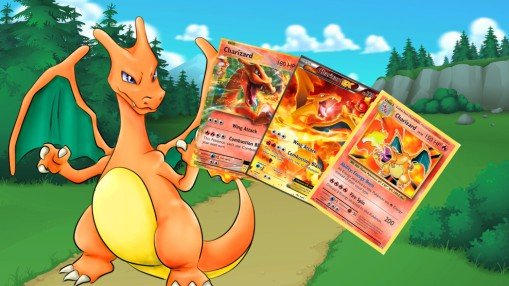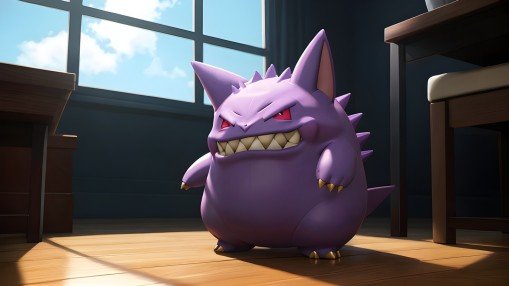It should be immediately noted that there is no such thing as a perfect Pokémon team. However, there is a significant difference between a poor combination of creatures and one that is suitable for specific goals.
 Image: chillywilly.club
Image: chillywilly.club
All heroes have both strengths and weaknesses. Therefore, it's important to focus on creating a strong party for certain tasks.
In the guide, you’ll learn about gameplay styles, how to form a team starting from its core, as well as the functions into which characters are divided for further grouping.
Pokémon roles
 Image: redpc.ru
Image: redpc.ru
The same warrior can perform different works for different parties. This is situational and depends on the application of combat potential. Here, we will provide specific examples that demonstrate what each role entails. With experience in team building, you’ll easily be able to select a hero for the needed position.
Lead, Anti-Lead, Baton Passer
 Image: redpc.ru
Image: redpc.ru
Lead is the one who goes first into battle. Usually, this is either a hero that is hard to break through or very fast. Necessary to use Taunt faster than the opponent's Lead or to set traps, etc., before the opponent. It is also used to establish the weather in the first round. Such a maneuver is not always advantageous, but it can be useful with certain tactics.
Cobalion, Froslass, Aerodactyl are well-suited. All of them have access to Taunt, Stealth Rock, or Spikes. They are quite durable and have the necessary abilities.
 Image: pokemon.fandom.com
Image: pokemon.fandom.com
Attacking Lead or Anti-Lead's primary task is to create pressure on the opponent's team from the first move. Such Pokémon should be placed first in battle.
The fighter must have high attack stats and powerful moves as well as a high base power. Trick Taunt can also be used to prevent the opponent's Lead from setting up Stealth Rock or Spikes, while simultaneously creating pressure.
Machamp excels in this role with Dynamic Punch. From the newer generations, Tapu Koko has powerful combinations with Taunt. Weavile is also suitable here, which can be played through Swords Dance.
 Image: pokemon.fandom.com
Image: pokemon.fandom.com
Baton Passer is a somewhat outdated role that is still occasionally used. Naturally, characters must know the Baton Pass move and have attacks that improve stats. They need to be durable or fast so that the hero is not quickly eliminated.
The role is needed when you have a Pokémon in a team on which you’ll use these skills. Accordingly, if the creature prioritizes special attacks, then those are exactly what they need to enhance.
Ninjask is suitable for this, but since the hero is easily killed, the warrior is equipped with Focus Sash, Substitute, or Taunt. Venomoth and other moths have a very good combination for Baton Pass thanks to the Sleep ability, during which there is an opportunity to boost stats.
Cleric, Phazer, Pivot, Revenge Killer
 Image: pokemon.fandom.com
Image: pokemon.fandom.com
A Cleric performs the function of a healer. These are usually durable characters because they need to assist the team throughout the battle. They heal, remove negative effects from allies, even sacrifice themselves for the sake of saving others.
It must have moves like Aromatherapy, Heal Bell, Wish, or Healing Wish. Clefable, Florges, Blissey are excellent for the role.
 Image: bulbapedia.bulbagarden.net
Image: bulbapedia.bulbagarden.net
Phazers are used to force an opponent to switch out from the battlefield. They must be very durable and know moves that can change Pokémon, such as Roar, Whirlwind, Yawn, Perish Song. Hippowdon, Azumarill, Torkoal are suitable for this role.
 Image: wallpapers.com
Image: wallpapers.com
Pivot switches fighters within their team. They are divided into Defensive, Offensive. The former is armored to take damage in place of the Pokémon entering the field. The latter must be very fast and is used to swiftly eliminate an opponent before withdrawing.
Wash Rotom, Scizor belong to the first type, while Tapu Koko, Tornadus Therian fit the second.
 Image: greednews.su
Image: greednews.su
Revenge Killer eliminates the biggest threat to the party. For instance, if you build a team that is vulnerable to Flygon, then taking Mamoswine as the fifth Pokémon would be wise.
The Role is relatively rare because if you are making a balanced group, a Revenge Killer is usually not necessary. However, if there is a desire to make a hyperactive team or something unconventional, then such a work might be useful.
Other roles
 Image: mixyfotos.ru
Image: mixyfotos.ru
Here are a few more potential functions, briefly explained:
- Spinner/Defoger — removes the opponent's traps.
- Spinblocker — prevents the removal of traps on your side of the battlefield.
- Stallbreaker — destroys the defensive core of the other party.
- Status Absorber — absorbs negative statuses.
- Suicide Lead — quickly executes its task at the start and then dies.
 Image: freekaspersky.ru
Image: freekaspersky.ru
- Support — helps the team achieve positive results.
- Sweeper — after being boosted by Support, wipes out the entire opposing group.
- Tank — withstands strong attacks and responds with powerful attacks.
- Trapper — lures the enemy into a trap, leaving him no good escape route.
- Utility — versatile, but takes on one specific duty in each team.
- Wall — an impenetrable Pokémon that absorbs damage.
- Wallbreaker — focuses on eliminating enemies with the Wall role.
Team types
 Image: triptonkosti.ru
Image: triptonkosti.ru
To understand which roles are needed for heroes, it's crucial to determine your gameplay style. There are three basic types, which we'll discuss further. With new Pokémon generations, the boundaries of these categories have become blurred, and professional players often use significantly different strategies. However, for beginners, understanding the basics is beneficial, and they can deviate from them in the future.
Offensive style
 Image: wiki.pokeliga.com
Image: wiki.pokeliga.com
The essence of the offensive style is to create constant pressure on the opponent's team. This is achieved by using Pokémon with high attack or special attack stats, preferably speed.
Such a party requires five fighters creating pressure and one Support or Suicide Lead. The latter provides Damage Dealers (DD) more room to maneuver.
Defensive style
 Image: gb5kirov.ru
Image: gb5kirov.ru
Style mainly utilizes creatures in the Tank role, supported by warriors equipped with traps, negative effects. The strategy's core is to wear down the opponent. Enemies are poisoned, preventing them from breaking through the Tanks, while you heal the characters and set more traps for the opponents.
Balanced Style
 Image: mavink.com
Image: mavink.com
This is the middle ground. You should have a balanced number of Tanks, DDs at the party. Typically, this includes: a Leader, Support, Sweeper, two Tanks, a Finisher.
Build a Team
 Image: mavink.com
Image: mavink.com
The process of creating a party begins with forming a core (from one to three Pokémon around which everything else is built). Let the choice fall on those you most want to play with.
Important point! To create synergy in the party, the other characters should cover the core's weaknesses — the types to which it is vulnerable. For example, if the core Pokémon is weak against the Ghost type, then Tanks should be taken.
A convenient website for team formation is Pokémon Showdown.
Main image by Ensiplay


 Vadim "Vadim" Dybinskiy
Vadim "Vadim" Dybinskiy 

















0 comments